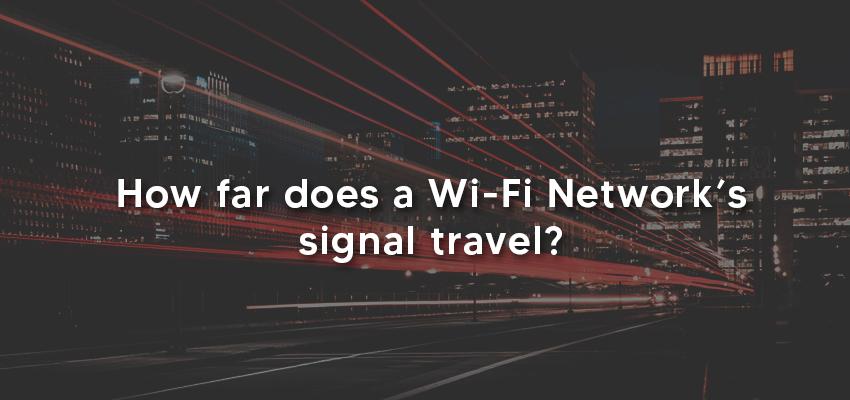
How Far Does a Wi-Fi Network’s Signal Travel?
Posted July 17, 2020, 4:09 a.m. by Emil S.With Wi-Fi signals, there’s such a thing called “path loss” because they do not travel an infinite distance. It can be compared to the sound made by your voice, which can only carry over a certain distance for anyone to hear it. When you shout, it can cover a larger area, and more people can hear you. If it’s feeble, it will barely be audible to a person standing right next to you.
The same can be said about a router’s Wi-Fi signal. It’s the router’s job to connect multiple devices in a network using that signal. And as with a voice, several factors could affect its range and reduce the coverage of a network.
A Wi-Fi Network’s Range
The effective range of a Wi-Fi Network can differ significantly from router to router and the scale of the network. A typical home router has the range adequate enough to handle the needs of a single home network. Home networks running on a 2.4 GHz band have a usual range of about 100-150 ft indoors and reach up to 300 ft outdoors.
Some operate on a 5 GHz band, which can reach superfast throughputs with low latencies but have a more limited range. That’s why newer dual-routers have become popular. They have low-band 2.4 GHz and high-band 5 GHz frequencies offering faster speed and longer range.
Commercial or business networks can cover the needs of an entire building, cover sprawling grounds, or even stretch across several square kilometers. Naturally, the bigger the network infrastructure, the higher the cost it takes to build, expand, upgrade, and maintain one.
Factors That Affect a Router’s Range
Three primary factors have a direct influence on how far a router’s Wi-Fi signal can travel and ultimately determine the coverage of the network. These are the router type, the kind of structure where it’s placed, and the 802.11 protocols it’s using.
Type of Router
No router is created equal, and the range of its Wi-Fi signal will differ significantly depending on the type and features of each. As mentioned earlier, the frequency band at which it operates is very important. Low-band frequencies up to 2.4 GHz travel longer distances and have better signal penetration through obstructions than high-band frequencies with 5 GHz peaks.
However, those working on a higher-band have faster performance and can push more data. It makes sense and has become more practical to get a router with a dual-band solution to get the best of both worlds. Another factor as equally important is the type of 802.11 protocols a router uses (more on that later). Also, the power of the transmitter, plus the kind of antennas used, will dictate how far its signal can travel.
Factors in the Home or Building
Some routers have omnidirectional antennas, which means they transmit data signals equally in every direction around them. That is why it’s crucial to place a router in a central access point. That way, it will be within optimal reach of all the network devices within a structure.
In some cases, replacing these antennas with directional ones will allow you to point them where they’re needed most. In a home network, physical barriers such as interior brick walls, thick floors, metal objects, furniture, appliances, and many other things, can create signal dead spots and limit the range. These obstructions to the signal will seriously affect your router’s Wi-Fi coverage. The same goes for buildings housing business networks.
Electromagnetic and Microwave signal interference can wreak havoc on the network as well. Microwaves from your cellphone, or oven, and electromagnetic signals from your TV can be the sources of these disruptions. Sometimes the interference can come from the outside. It could be from a neighbor’s network or devices. In that case, having outer brick walls with only a few windows may be advantageous.
Where you place your router within a structure can determine how well or not your network will work. In dwellings experiencing these issues, owners could buy a second router and potentially double the size of the network. You can also add a signal booster or extender to help eliminate as much of the dead spots as possible and to extend coverage.
Wireless Standard Being Used
Most routers today use the 802.11 sets of protocols based on the IEEE (Institute of Electrical and Electronics Engineers) 802 standard. 802.11b routers are the most common using the 2.4 GHz band has a range of 115 ft indoors and 460 ft outdoors. An 802.11g reaches 125 ft indoors and 460 ft outdoors. An 802.11a uses a 5 GHz band, reaching 115 ft indoors and 390 ft outdoors. An 802.11n can operate on both 2.4 and 5 GHz bands and has longer 230 ft indoor and 800 ft outdoor ranges.
